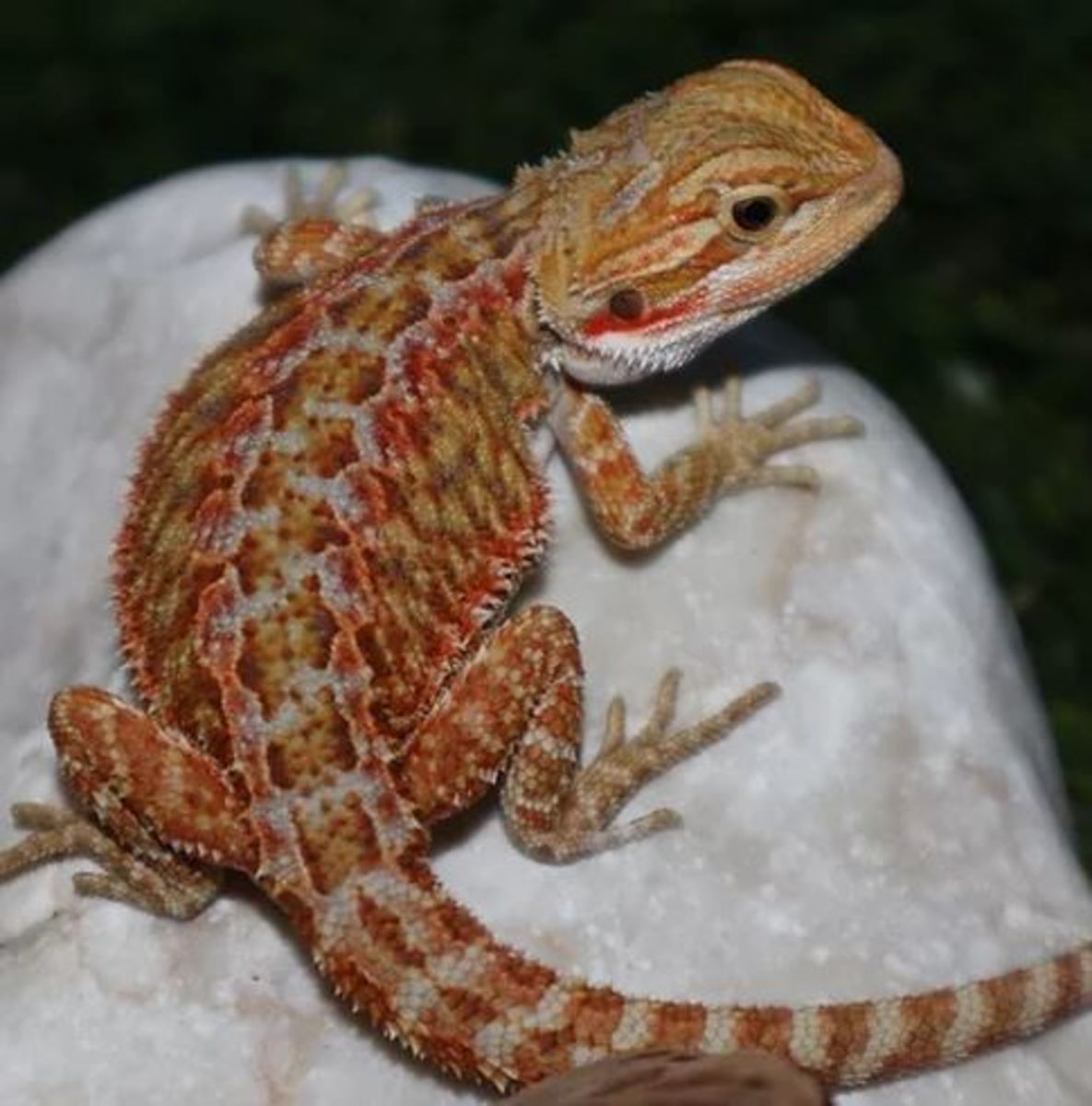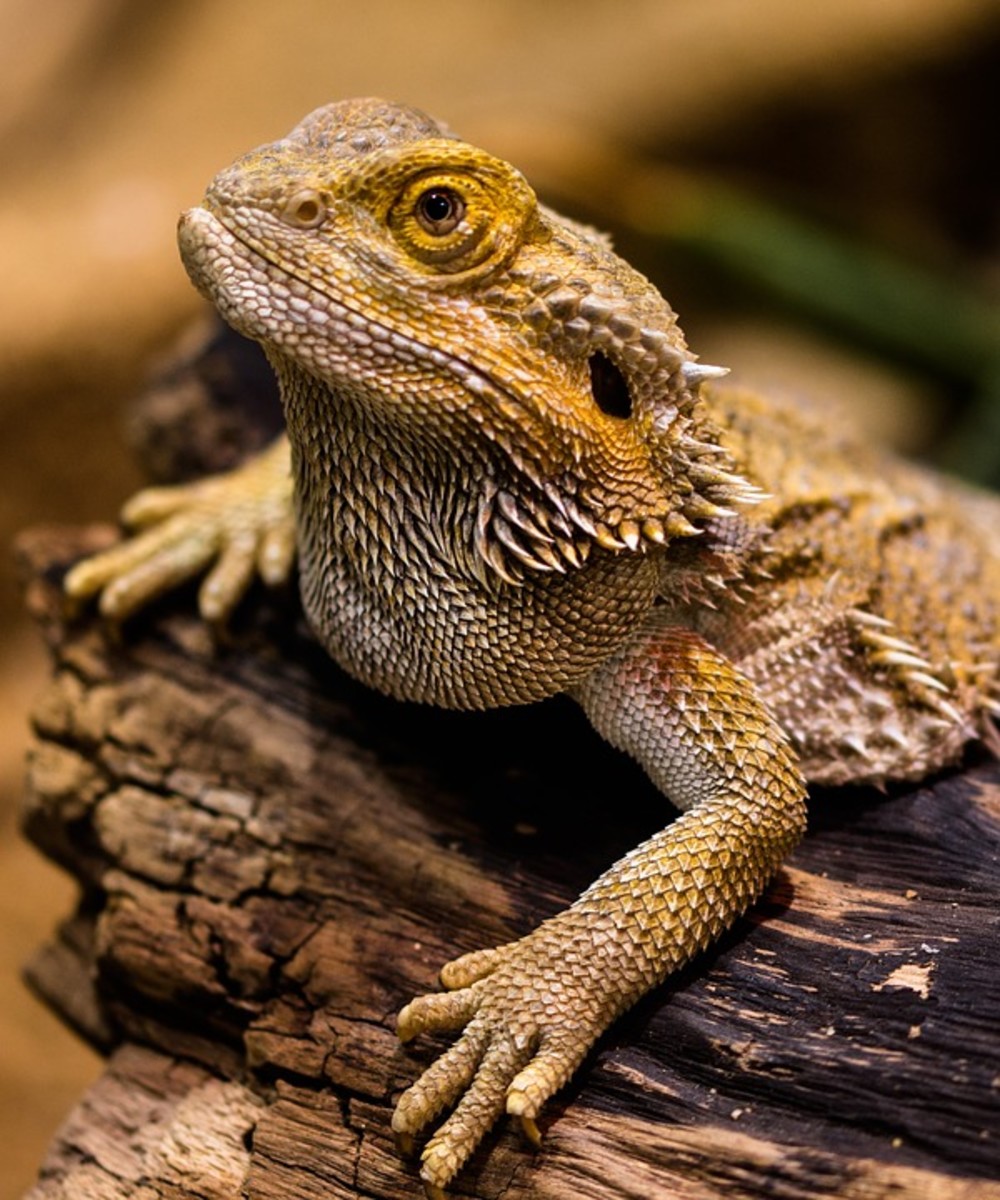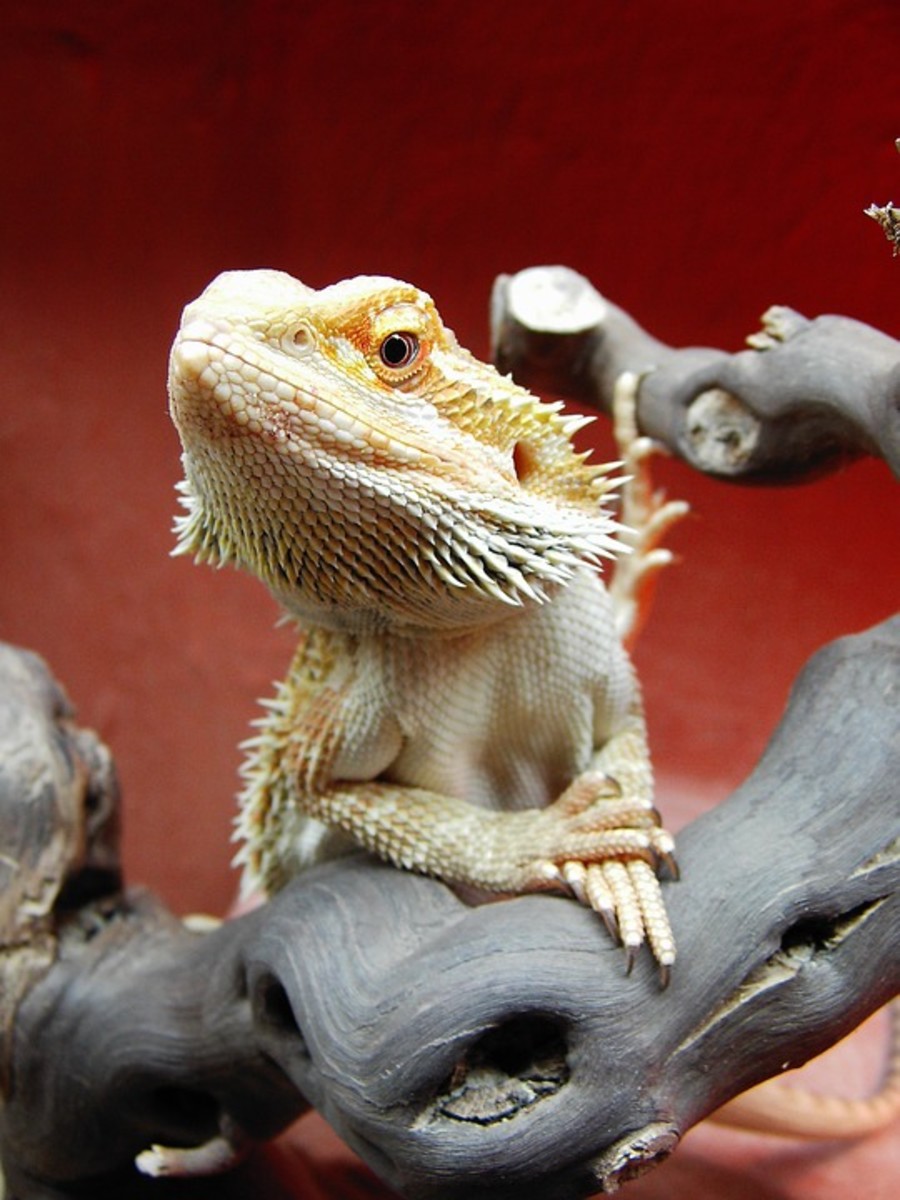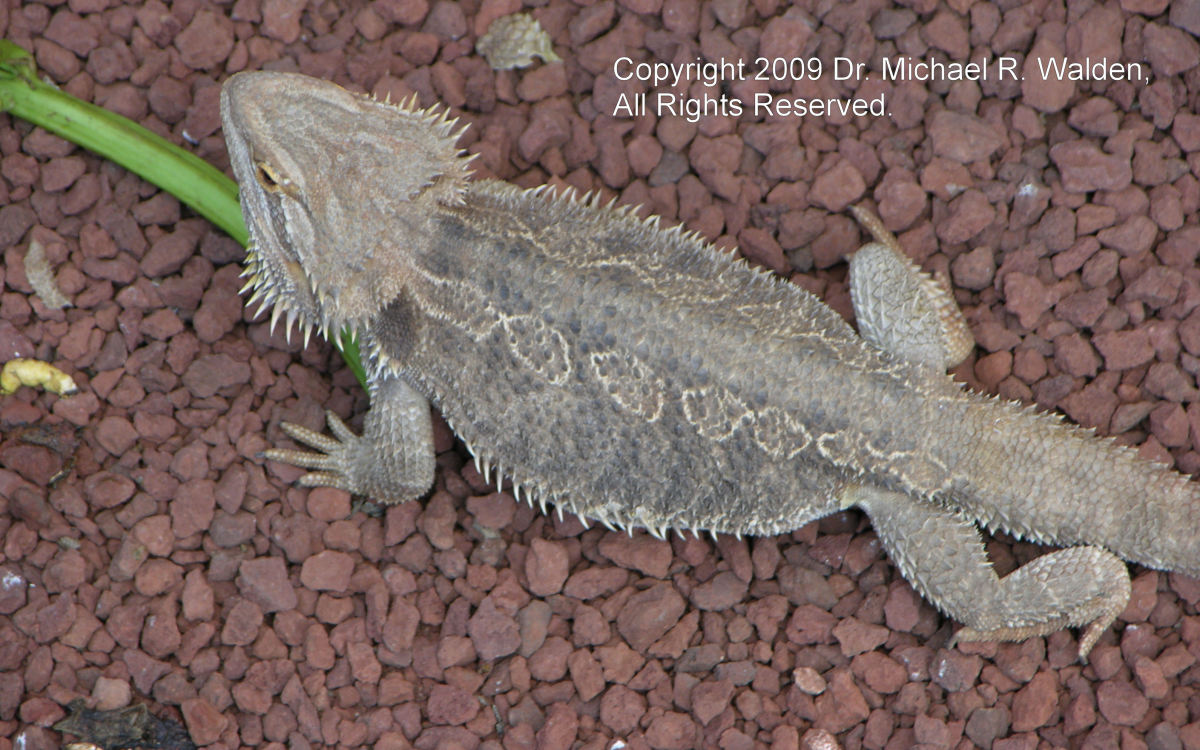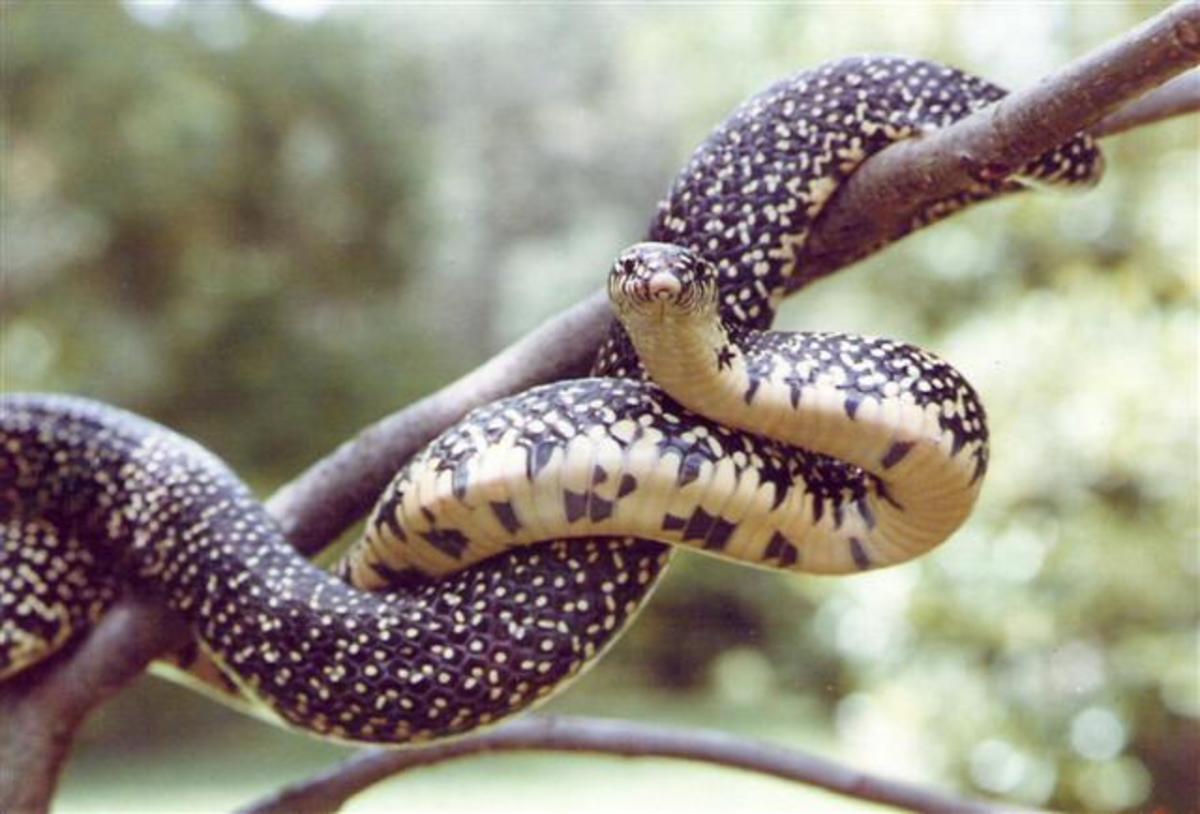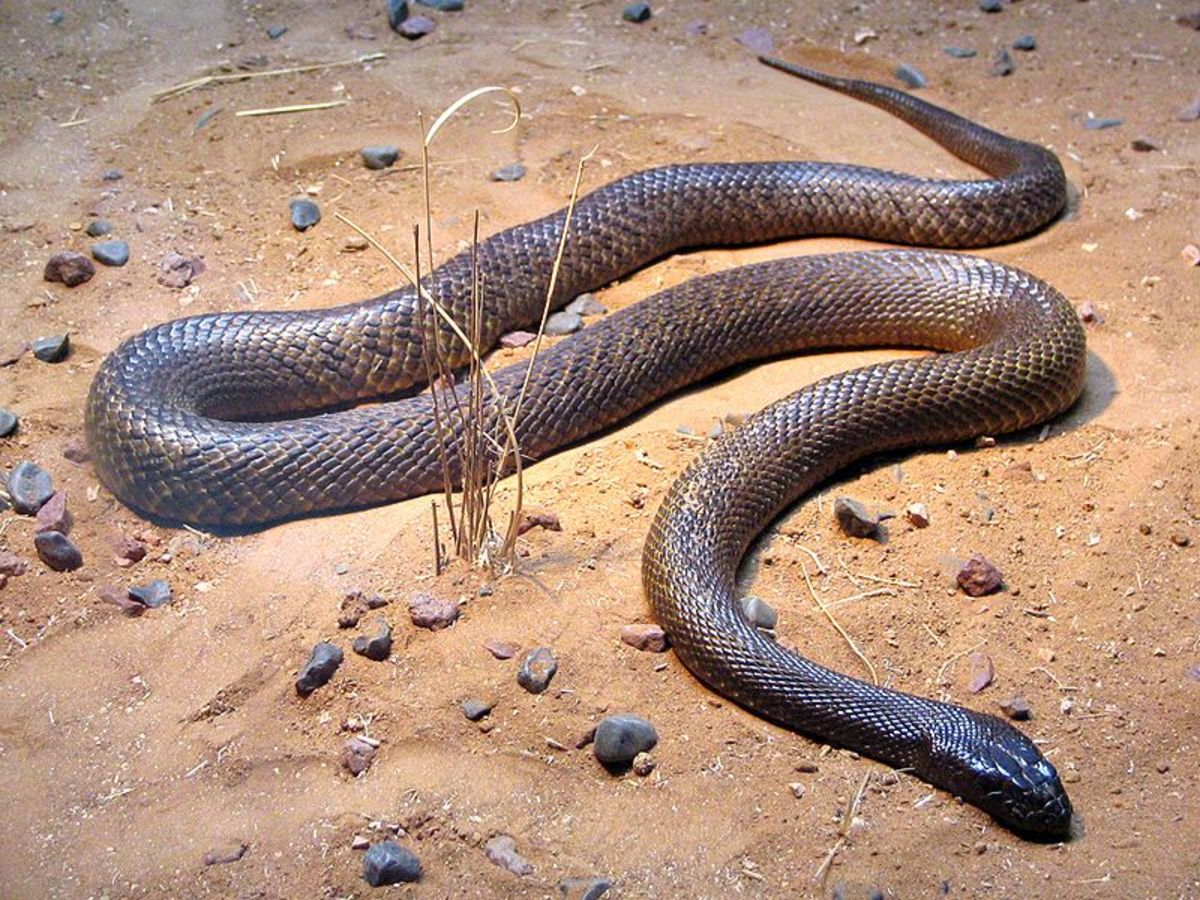All About Bearded Dragons
Bearded Dragons are desert creatures, and are perfectly at home in dry, hot conditions. They hail from Australia, and live in arid, rocky, semi-desert regions there. Bearded Dragons belong to the Pogona genus, which contains six other species of lizard along with the Berdie. Bearded Dragons have a life expectancy of about 5 - 10 years, however with proper care they can live longer.
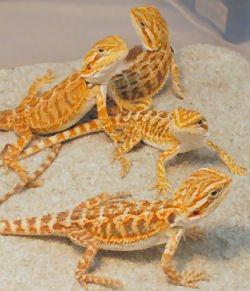
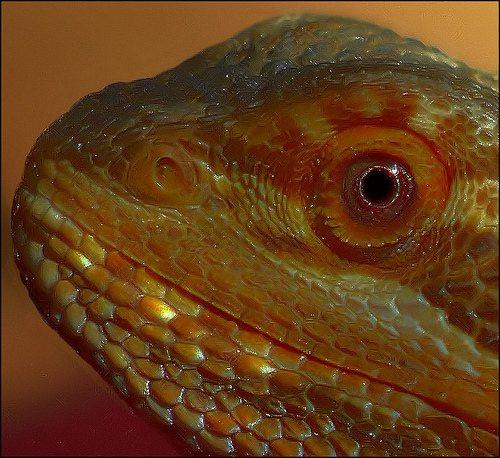
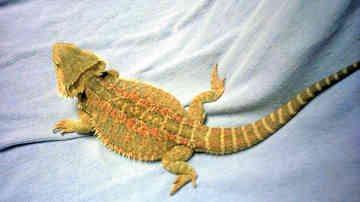
Bearded Dragons, of course, have a "beard". This is a piece of skin on the throat that will expand when threatened, along with skin on the back of the head. This "flap" of skin is hidden by spiny scales placed in clusters and rows on the throat. Their spiny exterior makes them look somewhat dangerous to hold, like cuddling a porcupine. When felt, these "spines" are rubbery, and bend when the dragon is not on alert or being threatened. They have a long tail, which makes up at least half the length of the dragon itself. Talons are present on their feet, but are not nearly as sharp as they look and generally used for climbing.
Bearded Dragons have a very calm nature, which makes them wonderful pets for adults and children alike, with supervision of course.
Dragons do require special care, as any pet does. A habitat will be in order. This should be 3 - 4 times as long as your dragon, to give him/her ample exercise room. Bearded Dragons are often very rambunctious, especially the juveniles.
A "lid" or top will be required for the tank. Dragons are avid climbers, and jumpers, and will need a top for the tank to securly home him/her inside. Substrate will be required, a "bedding" for your dragon. Sand is often recommended for this. Your dragon should be provided with something to climb on, such as a "basking rock". Two non-tipping bowls should be placed in his habitat as well. One should be kept filled with clean, fresh water. The other should hold greens and vegetables.
A heating pad should be placed under a part of the habitat, but not the whole length, so that the Dragon can get to a cooler area if need be. Also, a UV light will be needed. The UVB rays from this light not only help the Dragon's bones develop and stay healthy, but they also help him digest his food!
A Dragon's main diet should be made up of about 80% leafy greens, 10% veggies, and 10% protein, or insects. Some vegitation can be harmful to Bearded Dragons, so below is a safe list that I aquired from Randor Veterinary Hospital of Pennsylvania:
"Good examples of greens to feed your dragon include collard greens, endive, dandelion leaves(no flowers), red and green leaf lettuce, romaine, mustard greens, parsley, and beet leaves. There are many other greens that can be a part of the diet, but the ones listed above are a good start. The underlined examples provide an excellent source of calcium. Kale and spinach also provide calcium, but should be limited since they can interfere with thyroid hormone. You can also give a small amount of fruit and vegetables such a carrot, pepper, cucumber, broccoli, tomato, banana, strawberries and melon. If you’d like to provide a constant supply of vegetation for your dragons, then in addition to the above-mentioned vegetables, potted plants such as purslane, pothos, hibiscus and garden greens can also be placed in the cage. Purslane and hibiscus in particular are very good for them and these plants tolerate the high temperatures of a bearded dragon habitat. Stay away from mushrooms, avocado, and berries from outside trees and bushes. "
Meal worms, superworms, and crickets serve as a good source of protein for your Bearded Dragon. You can ask your local pet store or vet about other types of are acceptable and safe.
Since Dragons are desert animals, they do not require a lot of water. On top of this, they also have a very unique way of "drinking" their liquids. Twice daily, your dragon should be misted with warm water. You can do this with a small spray bottle. Bearded Dragons absorb water through their skin rather than drinking it. Along with this, your Dragon should be bathed once a week. To do this, fill your sink, or some other container, with warm water, shallow enough for your dragon to stand in and keep his head above the water. Gentle rub over his body to loosen any sand that could be stuck in his pores. Not bathing your dragon can lead to constipation.

